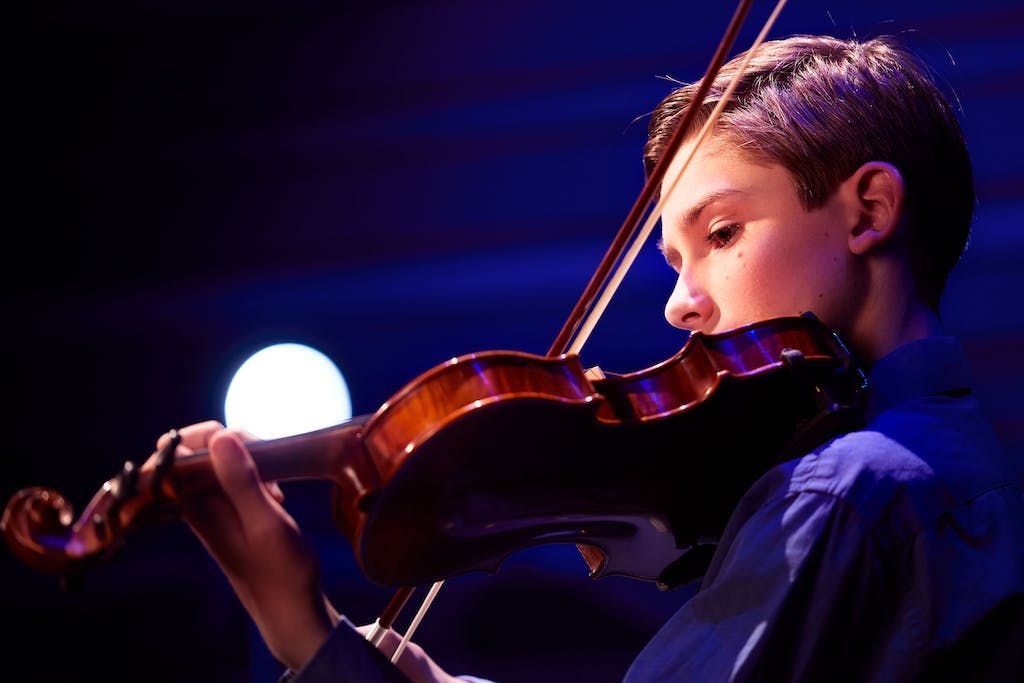METHODOLOGY
YAMAHA MUSIC EDUCATION SYSTEM
A music learning system present in the worldwide network of more than 6,000 Yamaha schools spread across five continents.
For over 60 years, Yamaha has been teaching children, youth and adults who wish to begin their musical studies through a comprehensive education which allows us to understand and assimilate music in all its facets, addressing the strong points of physical and intellectual development of each age and obtaining the maximum learning benefit.
Continuing teacher training and excellent teaching materials explain why the Yamaha Music Education System is currently the most widespread and acclaimed private music education system in the world.

As the chart shows, special attention must be paid to the auditory system. It develops rapidly between the ages of 4 and 6 and then stabilizes. Therefore, it is important to listen, sing, and play an instrument between the ages of 4 and 6. Furthermore, motor skills develop significantly between the ages of 8 and 12.
That's why our courses are aimed at preschool and school-age children.
For adolescents and adults, courses designed to be inclusive and tailored to the learning needs of each age group are offered.
In our classes, we start with simple concepts and gradually increase the difficulty to discover each student's strengths.
Teaching quality is governed by rigorous teacher training, ensuring high performance in teaching the system in fully equipped facilities.
Students of the Yamaha Music Education System pass on the talents our lessons helped them discover, and many have become professional composers and musicians around the world.


WHAT MAKES THE YAMAHA EDUCATION SYSTEM DIFFERENT FROM THE REST?
The importance of music in children's development is no secret. Numerous studies show that learning to play an instrument improves children's skills in the following areas:
· Intellectual
· Social and emotional
· Motor
· Linguistic
· General literacy
Think of those little geniuses who, by elementary school, are already able to read, write, and solve math problems appropriate for secondary school. You'll see that, in most cases, music plays an important role in their lives.
Admittedly, the above example is an extreme case. It simply serves to reinforce the message that introducing a child to the world of music is one of the best decisions a parent can make.
The Yamaha Education System compares music to language.
Reflection on children's relationship with language:
Even before birth, children hear people speak, absorb sounds, and become familiar with language from the womb. During early childhood, they begin to repeat what they hear, and we encourage them to babble nonsense to develop coherent communication.
Shortly after, they incorporate language into their thought structures and begin to assign meanings to words and expressions.
After a while, children begin to construct logical sentences that soon turn into conversations.
After a few years, children have had time to become familiar with the act of thinking and speaking and are ready to learn to read and write. Once these foundations have been laid, the basics of grammar and syntactical theory are introduced.
The Yamaha Music Education System follows a similar order to develop musical skills.

YAMAHA TEACHES MUSIC AS IF IT WERE ONE MORE MOTHER TONGUE
One thing that is evident after reading the previous section is that children are not expected to learn to read and write before they can speak.
However, many music teachers teach musical language to children at the same time they are beginning to play an instrument. This method is called "note-centered" and is similar to expecting a child to read and write before learning to speak.
This teaching methodology encourages students to adopt the habit of playing notes, rather than music. It's very difficult to fall in love with music this way.
To put it bluntly, taking a "notes-centric" approach is like putting the cart before the horse.
In contrast, Yamaha's approach is "memorization-centric."
This means that Yamaha teachers follow the sequence of listening, singing, playing, reading, and writing, while also encouraging children to venture into creating music on their own.
According to research conducted in Japan, this teaching methodology is based on the assumption that the vast majority of children acquire varying degrees of "perfect pitch" after about two and a half years of learning. This process is virtually the same as the one children follow when developing language skills.
ANALYSIS OF SOME SPECIFICATIONS OF THE YAMAHA EDUCATION SYSTEM
The Yamaha Music Education System also includes group lessons. This type of environment allows children to sing and play instruments both individually and in groups. It's a philosophy that fosters the development of musical processes.
Group lessons highlight the communicative aspects of music while developing children's cooperation skills. They also provide an opportunity to improve teamwork skills and engage with a broader community, which will further support growth and development.
The satisfaction and camaraderie that comes from sharing an experience with friends is an unparalleled feeling. It also serves as an additional incentive for children to maintain their passion for music and return to it as the years go by.
Likewise, the bonds shared by members of a class or band generate a unique chemistry that will be reflected in expressive and fascinating group performances.
These types of experiences will further encourage children to commit to music for life.

MUCH MORE THAN "PLAYING AN INSTRUMENT"
Although playing an instrument is a fundamental part of music, focusing too much on this aspect can lead you to adopt a one-dimensional approach. There's no doubt that technical skills are valuable, but prioritizing them above all else negates many of the most beautiful aspects of music.
For this reason, Yamaha focuses much of its teaching on activities such as listening, singing, reading, and creating with a sense of music and its message. This helps develop imaginative, well-rounded, and comprehensive musical minds capable of appreciating and cherishing a variety of styles and genres.
PRIORITIZE IMPROVISATION AND COMPOSITION
In the 20th century, some of the world's finest musicians knew how to improvise and compose. However, in practice, many teaching systems fail to combine the two skills.
Yamaha instructors believe that composition and improvisation are mutually complementary activities. By mastering both skills, we can listen, interpret, and read music with greater appreciation and understanding. This is when we are capable of composing music that is equally beautiful and rewarding.
Once children have learned a wide variety of songs, Yamaha begins teaching them composition and encourages and monitors their individual progress in this area.
Related articles:







